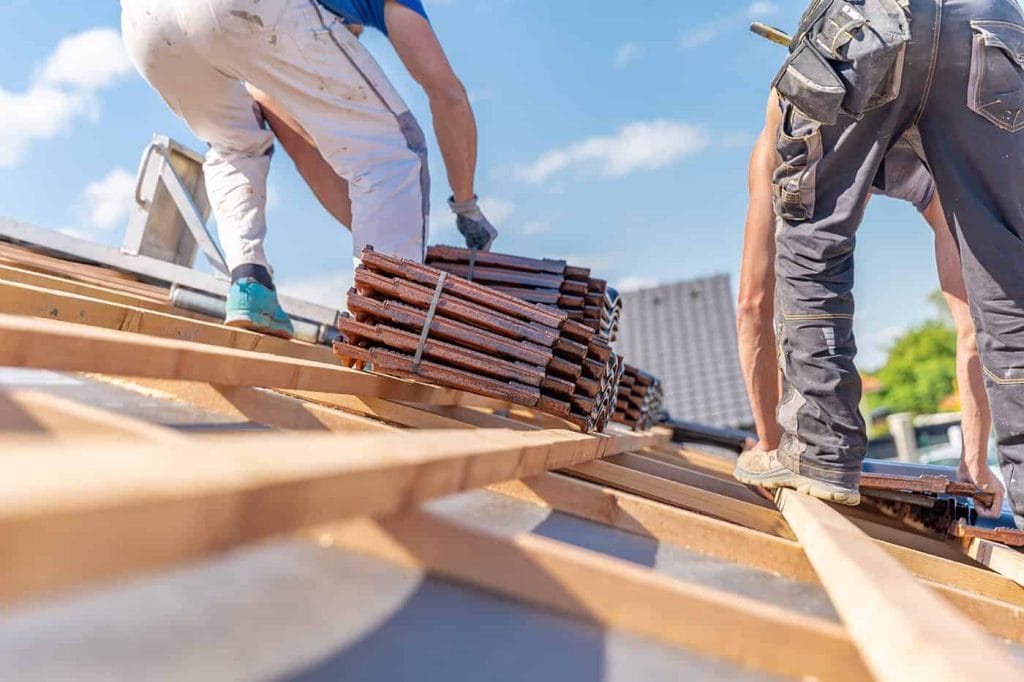Replacing your roof is a significant investment, but it’s one that’s necessary to protect your home and ensure its long-term stability. Whether you’re dealing with an aging roof or damage from a storm, understanding the roof replacement process will help you prepare and make informed decisions. In this guide, we’ll cover everything you can expect during the roof replacement process, from the initial consultation to the final inspection.
Roof Replacement Preparation: Getting Ready for the Big Change
Before the roof replacement process begins, there’s some preparation involved. As a homeowner, there are a few things you should know to ensure a smooth experience. First, it’s essential to hire a reliable roofing contractor with experience in residential roof replacements. A good roofing company will walk you through each step and help you choose the right roofing materials.
Choosing Roofing Materials
One of the first decisions you’ll make is selecting the roofing materials for your new roof. There are various options available, including asphalt shingles, metal, slate, and tile. Each material has its benefits and drawbacks depending on your budget, climate, and the aesthetics you want for your home. Asphalt shingles are the most common due to their affordability and durability, while materials like metal or slate offer long-lasting solutions but come at a higher cost.
Roofing Inspection Before Replacement
Before any physical work begins, a roofing inspection will be conducted by your contractor. This inspection helps determine the scope of the project, any hidden damage, and whether the decking or structure beneath the roof needs attention. The roofing contractor will assess things like leaks, rot, or damage caused by storms, ensuring they address all issues during the replacement process.
Roof Removal Process: Taking the Old Roof Off
The roof removal process, also known as a roof tear-off, is one of the most important steps in a roof replacement. The process involves removing the old roofing materials, including shingles, underlayment, and possibly the decking. This step ensures that the new roof is installed on a clean, solid surface, which is critical for the roof’s longevity and performance.
How Long Does a Roof Replacement Take?
The timeline for a roof replacement can vary based on the size of the roof, the materials being used, and weather conditions. On average, a full roof replacement can take anywhere from one to three days. However, if the roof is large or there are complications, the process may take longer. A professional roofing contractor will be able to give you a more accurate estimate after conducting the initial inspection.
Roofing Project Stages: What Happens Next?
After the roof is removed, the next stage involves preparing the surface for the new roof. This includes inspecting the decking for damage and replacing any sections that are compromised. The contractor will then lay down the underlayment, a moisture barrier that provides additional protection for your home. After the underlayment is in place, the new roofing materials will be installed.
New Roof Installation
The new roof installation typically begins with the placement of the first row of shingles, followed by each additional row until the entire roof is covered. For roofs with steep pitches or complex shapes, the installation may require extra care and skill to ensure everything is properly aligned.
Roofing installation also involves the placement of ridge vents, flashing around chimneys, skylights, and vents, and installing gutters if needed. These components help with water drainage and protect your home from leaks and water damage.
Roof Replacement Cost: Understanding the Investment
Roof replacement cost can vary depending on several factors, such as the size of your roof, the materials you choose, and your geographical location. On average, roof replacement costs range from $5,000 to $10,000 for an asphalt shingle roof. However, premium materials like metal or slate can increase the cost. Be sure to get a clear estimate from your roofing contractor, including both the cost of materials and labor.
Roofing Company Selection
Selecting a reputable roofing company is crucial for the success of your roof replacement. Look for contractors who have good reviews, proper licensing, and insurance, and who offer warranties on their work. A professional roofing contractor will guide you through each step, from roof removal to the final inspection, ensuring you get the best value for your investment.
Roof Replacement for Storm Damage: Special Considerations
If your roof replacement is due to storm damage, your roofing contractor will carefully assess the damage and may work with your insurance company to ensure your claim is processed correctly. Storm damage can sometimes cause underlying structural issues, so it’s important to have a thorough inspection before proceeding with the replacement.
Roof Installation After Removal
Once the old roof is removed, your roofing contractor will prepare the surface and begin installing the new roof. This process can be faster than the tear-off, as long as the decking is in good condition. Any necessary repairs to the decking will be handled before the new materials are laid down.
Roof Replacement Timeline: Scheduling and Expectations
When scheduling your roof replacement, it’s essential to account for weather conditions and the contractor’s availability. Roof replacements are usually best done in the warmer months when the weather is more predictable. Depending on the roofing company’s schedule, you may need to book your replacement a few weeks in advance.
Roof Replacement Permit
In some areas, a permit may be required for a roof replacement. Your roofing contractor will be familiar with local building codes and will handle the necessary paperwork. Make sure to check whether a permit is needed in your area to avoid any delays during the replacement process.
Residential Roofing Services: The Final Inspection and Quality Standards
Once the roof installation is complete, the roofing contractor will conduct a final inspection to ensure everything is up to code and meets the highest quality standards. During this final inspection, the contractor will check the new roof for any defects and ensure proper installation of all components.
Roof Replacement for Old Roofs
If your roof is very old or has undergone multiple repairs over the years, you may face additional challenges during the replacement process. Older roofs often have more wear and tear, which could require more extensive decking repairs. However, this is all part of ensuring that your new roof is installed on a solid foundation.
Conclusion: Ensuring Your Roof Replacement is a Success
The roof replacement process can seem overwhelming, but with the right preparation and a trusted roofing contractor, you can expect a smooth and efficient experience. From roof removal to the installation of new roofing materials, understanding each stage will help you stay informed and make the best decisions for your home.
If you’re in need of roof replacement or a roofing inspection, Gravity Roofing is here to assist you. Our expert team offers high-quality residential roofing services, ensuring that your home is protected with a durable, long-lasting roof. Contact us today to schedule your roof replacement and get a detailed assessment of your roofing needs.














